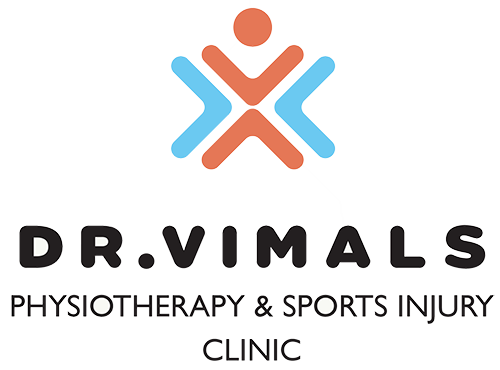The Role Of Sports Physiotherapy
Dr Vimal Sharma has been playing an active role in the arena of Sports Physiotherapy. As a senior Physiotherapist holding immense experience of over two decades, he understands the specific needs of his patients. Amongst several genres, tackling Sports injuries, is also his forte.
In conversation with Sharmila Chand, Dr Sharma talks about the role of Physiotherapy in Sports Injury.
Let us first understand what is Sports Physiotherapy?
Sports physiotherapy is a specialized branch of physiotherapy that focuses on the prevention, assessment, treatment, and rehabilitation of sports and exercise-related injuries.
While general physiotherapy addresses a wide range of problems and issues, Sports Physiotherapy specifically is meant for athletes and sports enthusiasts.
Role of Sports Physiotherapist
The essential role of the sports physiotherapist is to provide treatment and rehabilitation of injuries and also to provide support for performance through injury prevention, maintenance and recovery interventions.
Sports Physiotherapists are armed with specialized knowledge and skills to manage sports injuries, optimize athletic performance, and implement injury prevention strategies. They are adept at understanding and determining the physical demands of various sports thereby chalking out a treatment program tailoring to meet the specific requirements of athletes, from amateurs to professionals.
What is Sports Injury?
A sports injury is any injury that occurs during sports or exercise, from tendonitis to complete sprains and fractures.
Common Types Of Sports Injuries
- Muscle Strains – These may occur when muscles tear or strain, could be from excessive use.
- Tendonitis – This condition affects the tendons that connect muscles to bones; it can also cause pain in joints surrounding the affected area.
- Bursitis – Bursae are small sacks of fluid located under the skin near bones where tendons attach to the bone. Bursae often get inflamed due to repetitive motions, such as running on hard surfaces.
- Shin Splints – it is a painful condition that affects lower leg muscles and tendons along their connection points at either side of tibia bone (the shin bone). The most common cause is rapid downhill running or jumping rope too vigorously.
The Role Of The Sports Physiotherapist
A sports physiotherapist plays a crucial role in curing Sports Injuries in the following manner:
# Assess the injury and determine the next line of action. It could be a series of rehab program or maybe a surgery is required.
# Treat the injury till it is fully cured
# The physiotherapist also sets specific guidelines to follow to help you avoid having a recurrence of the injury.
# Chalk out a rehabilitation programme so that the injury gets fully cured to get back into action without having pain or problems.
Tips to Tackle Sports Injuries
- Warm-Up and Cool-Down
Always start with a proper warm-up to prepare your muscles and joints for activity.
Cooling down with light stretching helps prevent stiffness and aids recovery.
- Use Correct Techniques and Form
Incorrect posture or technique increases the risk of injury.
Seek guidance from a physiotherapist to refine your form.
- Strengthen and Condition Muscles
strength training and conditioning exercises to build muscle stability and joint support.
Focus on core stability
- Listen to Your Body
Don’t ignore pain—it’s a warning sign.
Rest and seek physiotherapy treatment if you experience discomfort during or after exercise.
- Stay Hydrated and Maintain Nutrition
Proper hydration prevents muscle cramps and fatigue.
- Use Protective Gear and Support. Taping or bracing vulnerable joints if prone to injuries.
- Focus on Flexibility and Mobility
- Gradual Progression
Increase training intensity gradually to prevent overuse injuries. Sudden spikes in activity can lead to muscle tears and stress fractures.
- RICE Protocol for Acute Injuries
- Seek Professional Physiotherapy Care
For persistent or severe injuries, consult a physiotherapist for a tailored rehabilitation program.
- Sports massage or deep tissue release every fortnightly to maintain the muscle flexibility and reducing chances of injuries because of tightness.
Tip: physiotherapy assessments can identify biomechanical imbalances, helping prevent recurring sports injuries.
…….
Frequently asked questions :
- Why should I visit a Sports Physiotherapist?
If you have any pain or problem due to sports injury or exercise, you need to visit a Sports
physiotherapist who will provide treatment and rehabilitation of injury. You will also get guidance for restoring optimal function through injury prevention, maintenance and recovery intervention program.
- How many times I need to visit the Physiotherapist?
Based on the assessment of the problem or injury, the physiotherapist designs personalized exercise programs tailored to specific athlete’s needs/ problem. These programs include specific exercises and techniques aimed at enhancing flexibility, strength, and stability in order to get back to normal function and sports specific fitness level.
Sharmila Chand is an Author, Journalist and Columnist. She can be reached at chand.sharmila@gmail.com

